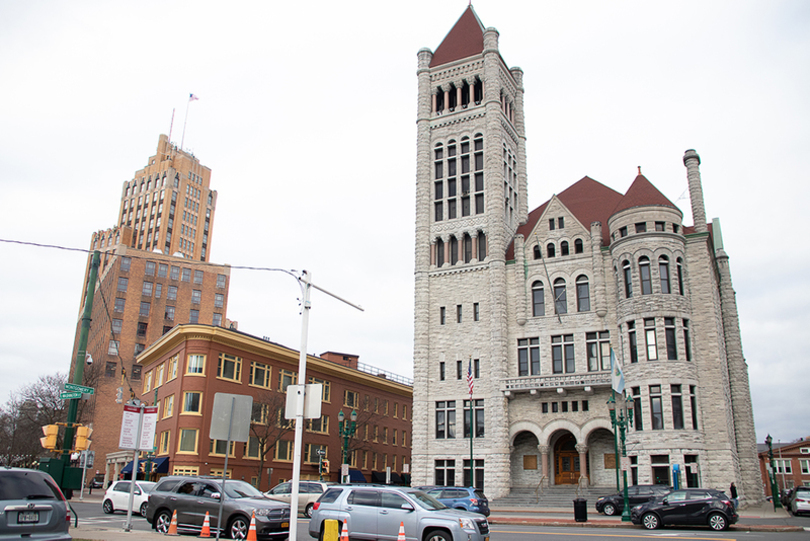Common Council approves grants for additional police, fire equipment

The additional equipment includes body armor for SPD's Public Order Unit and thermal imaging cameras for the fire department. Elizabeth Billman | Senior Staff Photographer
The Daily Orange is a nonprofit newsroom that receives no funding from Syracuse University. Consider donating today to support our mission.
The Syracuse Common Council approved over $300,000 in federal grants for new police and fire equipment at its meeting Monday.
Of the grants — which the council passed unanimously — $173,000 will go toward police equipment and $125,000 toward fire equipment.
New equipment for the Syracuse Police Department includes $75,000 toward SWAT team equipment and protective security detail training and $53,000 toward new body armor for the department’s Public Order Unit — officers tasked with handling protests in the city. An additional $50,000 will be spent to build a fence around the Townsend Street police station’s parking lot.
Fire Department funding will be used to purchase new thermal imaging cameras to identify people inside burning buildings when there is no visibility. The department’s current inventory of cameras are at the end of their operational lives, according to the Syracuse Fire Department.
Both the police and fire equipment grants come at no cost to the city, and are entirely paid for by federal and state governments.
Some council members initially had concerns about the police grants, given the recent passage of the Right to Know Act and continued pressure from city residents to reform SPD. As part of an executive order, the department in September published an inventory of its military-grade equipment, which includes jackets, backpacks and a $658,000, multi-ton mine-resistant vehicle acquired through a military surplus equipment program.
Council President Helen Hudson noted in the council’s Jan. 21 meeting that the grants could be seen as “divisive to the community.” However, an increase in visits from politicians to the city of Syracuse has made additional protection training necessary, according to Joe Cecile, first deputy chief of police.
Councilor-at-large Ronnie White also raised concerns about the grants, pointing out that the wording of the resolution was vague.
“It was pretty telling that when I asked (Cecile) to give a breakdown (of specific equipment), they weren’t exactly willing to say publicly what they were asking for,” White said. “I certainly intend to follow up to figure out what secret technical things they have going on that they didn’t want to say publicly.”
The body armor, Model L5 Personal Protective Equipment from Nagashi Protective Clothing supply, will cost approximately $1,300 per officer and will include full upper body protection as well as boots and gloves, according to the resolution. The new armor will go under public order officers’ clothes and make them look less threatening and militarized when deployed, Cecile said.
“At the end of the day, when it’s not really costing the city anything, as long as we’re asking the right questions and keeping track of what they’re doing with (the equipment), there’s nothing wrong with going ahead,” White said.
Other business
The council also approved over $700,000 in funding from the U.S. Department of Housing and Urban Development to provide direct financial assistance to qualified Syracuse residents to help pay for rent and other housing costs. The city received the funding through a federal block grant as part of coronavirus relief aid. This is the third and final round of funding from HUD under last year’s coronavirus relief bill.
Councilman Pat Hogan withdrew a resolution to recharacterize “care homes” in Syracuse zoning law, citing threats of lawsuits against the city from local nonprofits. “Care homes” is a vague term that makes it easy for large nonprofit organizations to open large facilities in neighborhoods without input from the community, according to Hogan.





